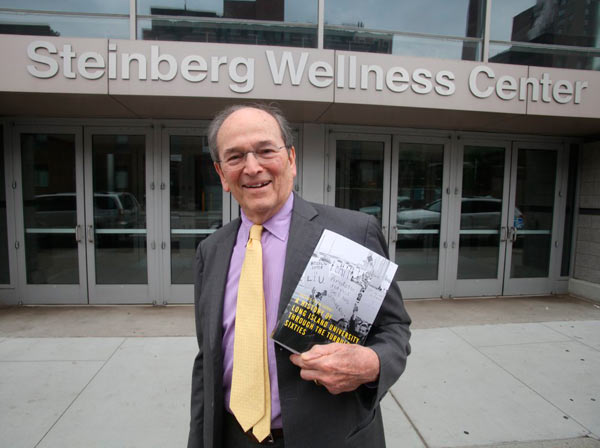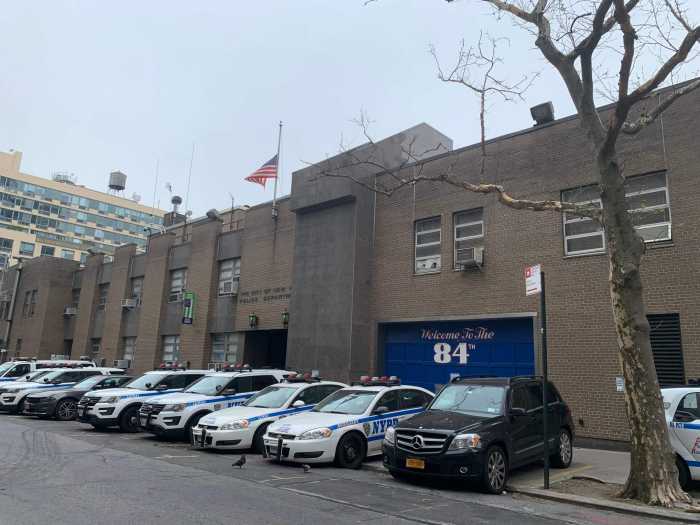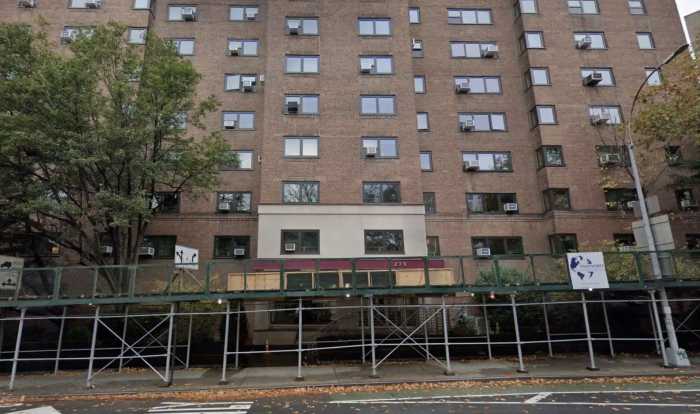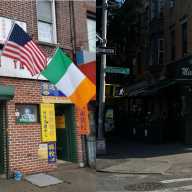Keep flying, Blackbirds!
That’s the message to be found in a just-released book penned by Long Island University’s ninth and longest-serving president that takes a magnifying glass to the decade whose events nearly broke the college, but would go on to make it the academic institution it is today.
“Preface to the Future: A History of Long Island University Through The Turbulent Sixties,” by president emeritus Dr. David J. Steinberg, recounts the history of the school during an era when U.S. college campuses were hotbeds for student unrest — and when the university was nearly torn apart by an administration that struggled to unite its three separate campuses in Brooklyn and Long Island’s Nassau and Suffolk counties.
Long Island University in the early 60s, Steinberg writes, was “an upwardly mobile institution with a Brooklyn swagger that aspired to achieve national recognition.”
But all that changed when the university’s then-chancellor Richard Conolly — a four-star World War II Naval Admiral — died in a 1962 plane crash.
Five different chancellors would lead the college over the next ten years — one of whom was fired after just 78 days on the job.
“During this decade, students marched and demonstrated, faculty members protested and then militantly unionized, and trustees privately and publicly fought with each other,” Steinberg writes. One of the college’s more highly-publicized demonstrations of the era was a 1968 student-led march across the Brooklyn Bridge, which was organized to protest the Brooklyn campus’s proposed sale to the City University of New York.
The president emeritus writes in great detail about the political tug-of-war over the Brooklyn campus, which ultimately involved several notable officials of the era, including Gov. Nelson Rockefeller, Mayor John Lindsay, Assemblymen Bertram Podell and Stanley Steingut, City University of New York Chancellor Albert Bowker, and Floyd McKissick, chairman of the Congress of Racial Equality.
But despite the era’s administrative infighting — which occurred as the private college competed over prospective students with the government-subsidized City and State University of New York schools, and faced criticism for not being inclusive enough — somehow, Steinberg writes, Long Island University “managed to succeed in its core mission of educating and graduating tens of thousands of students.”
The author, who served as the university’s president from 1985-2013, also addresses historic moments before and after his book’s titular decade that include: its 1920 founding by a group of Brooklyn civic and business leaders, the undefeated 1939 season of the Blackbirds men’s basketball team, the 1970 firebombing of the Brooklyn campus’s Humanities Building, and the sale of the Suffolk County campus to the State University of New York that same year.
But, in an interview with Community News Group, Steinberg said that to understand today’s Long Island University requires a firm grasp of its turbulent years from 1962-72, which is why he penned the tome.
“It’s a mixed legacy, they were bad years,” Steinberg said. “They were bad years everywhere. Columbia was taken over, City College was taken over, Harvard was taken over, but Long Island University had this other dimension on top of that — the tensions within.”
Steinberg — whose namesake $45-million, 2,500-seat facility on the Brooklyn campus, the Steinberg Wellness Center, has been the home court of the Blackbirds basketball team since it opened in 2006 — ends his book with high hopes for the school he once led.
“It might just be that the experiences suffered during the tumultuous decade of the sixties brought LIU back to its true calli
“Preface to the Future: A History of Long Island University Through the Turbulent Sixties,” by David J. Steinberg, is published by CreateSpace, and is available for $24.95 at Barnes & Noble and other booksellers.

























